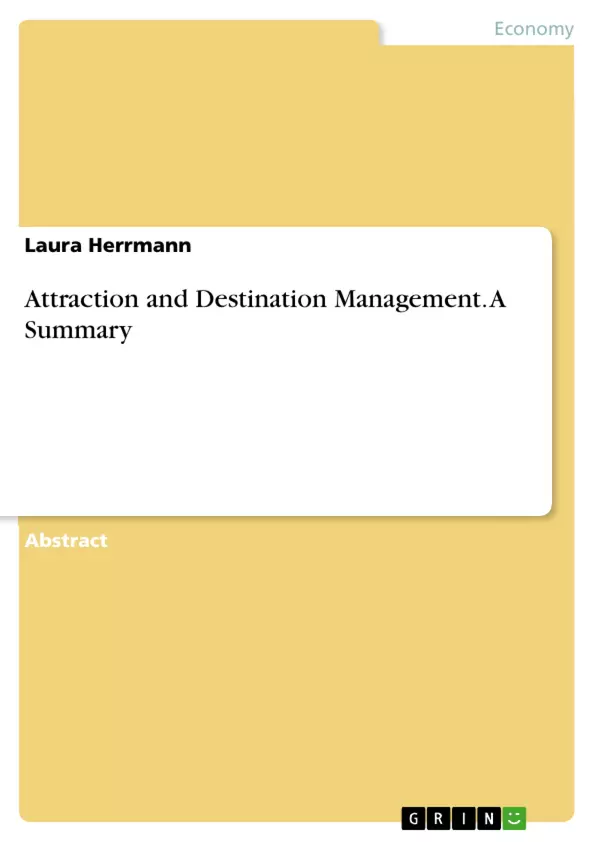The book includes the following: What ist attraction?, Visitor attractions vs. Tourist attractions, Attractions vs. Destinations, Attractions and facilities, (...).
Table of Contents
- Attractions, Destinations, and Activities
- What is Attraction?
- Attractions vs. Destinations
- Attractions vs. Activities
- Swarbrooke's Model for Destination Development
- Product Life Cycle
- GAP-Model
- Chain of Critical Incidents
Objectives and Key Themes
This text aims to provide a comprehensive overview of the key concepts in tourism management, specifically focusing on the relationship between attractions, destinations, and activities. The text also explores how these elements contribute to destination development and the overall tourist experience. The key themes of the text include:- Defining and distinguishing between attractions, destinations, and activities in tourism
- Analyzing the development process of tourism destinations, including Swarbrooke's Model
- Understanding the concept of product life cycle and its application to tourism attractions
- Exploring the GAP-Model and its implications for managing customer expectations in attraction management
- Examining the chain of critical incidents that influence a visitor's overall experience
Chapter Summaries
Attractions, Destinations, and Activities
This chapter provides a clear definition of attractions, destinations, and activities in tourism, highlighting their interrelationship and impact on tourist experiences. It explores the differences between visitor attractions and tourist attractions, as well as the development of support services within attractions.Swarbrooke's Model for Destination Development
This chapter introduces Swarbrooke's Model for Destination Development, outlining the stages of destination growth from a single attraction to a diversified destination. The chapter emphasizes the role of attractions as the initial catalyst for destination development and discusses the evolution of support services and marketing strategies.Product Life Cycle
This chapter explores the concept of the product life cycle and its applicability to tourism attractions. It examines the characteristics of each stage of the product life cycle, including introduction, growth, maturity, and decline, and discusses the strategic marketing responses required at each stage.GAP-Model
This chapter introduces the GAP-Model, which focuses on the gap between customer expectations and actual service delivery in attraction management. It outlines the five specific gaps within the model, discussing the importance of managing these gaps to avoid negative customer experiences.Keywords
This text focuses on the key concepts and terms within tourism management, including attractions, destinations, activities, destination development, product life cycle, GAP-Model, and chain of critical incidents. It also emphasizes the importance of understanding customer expectations and managing service delivery to enhance tourist experiences.
Excerpt out of 8 pages
- scroll top
- Quote paper
- Laura Herrmann (Author), 2013, Attraction and Destination Management. A Summary, Munich, GRIN Verlag, https://www.grin.com/document/277869
Look inside the ebook



